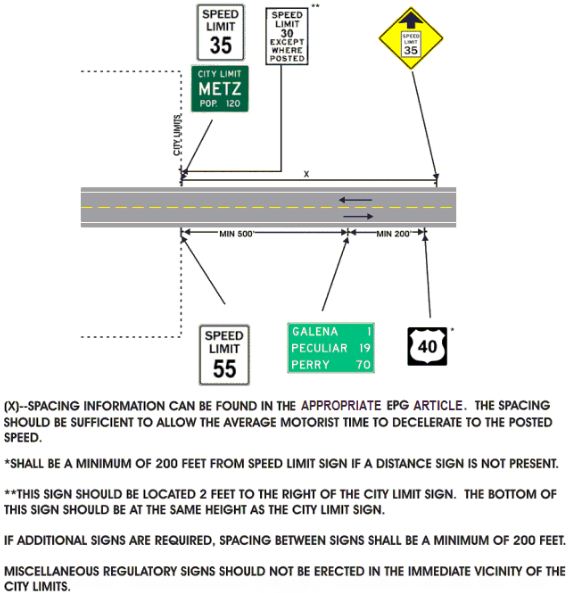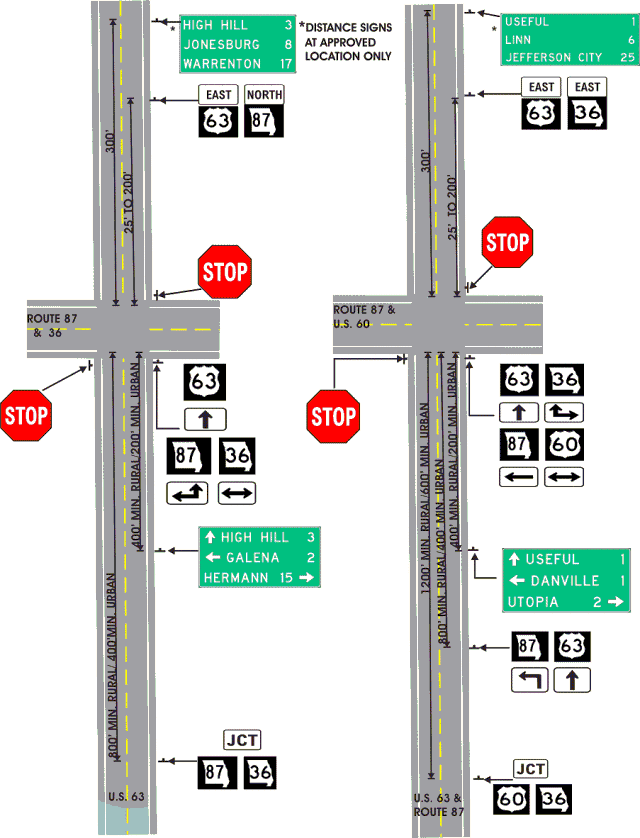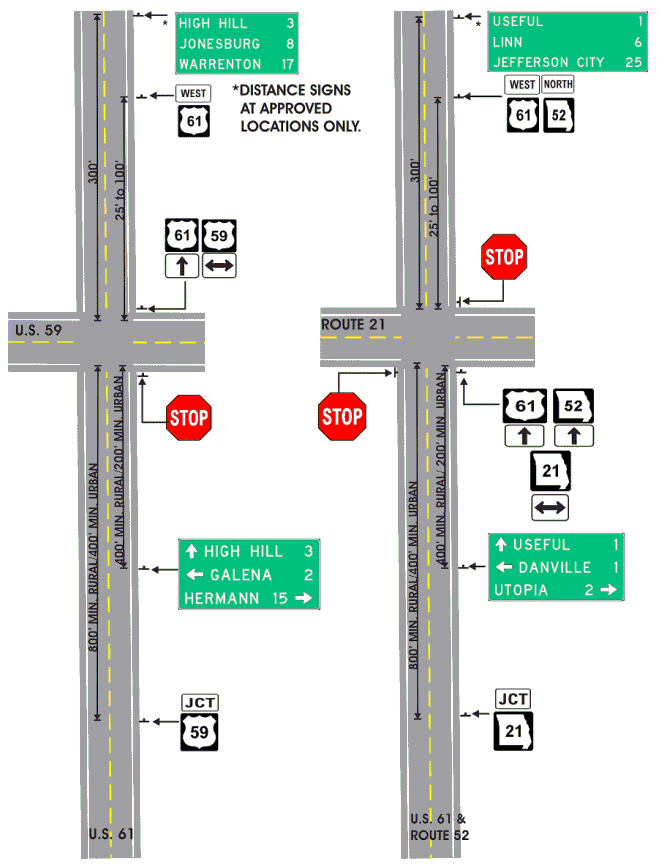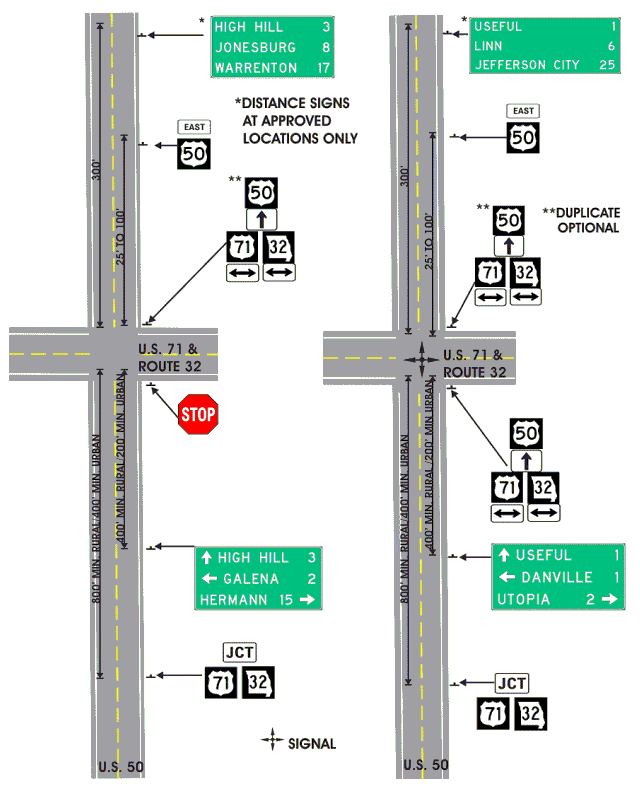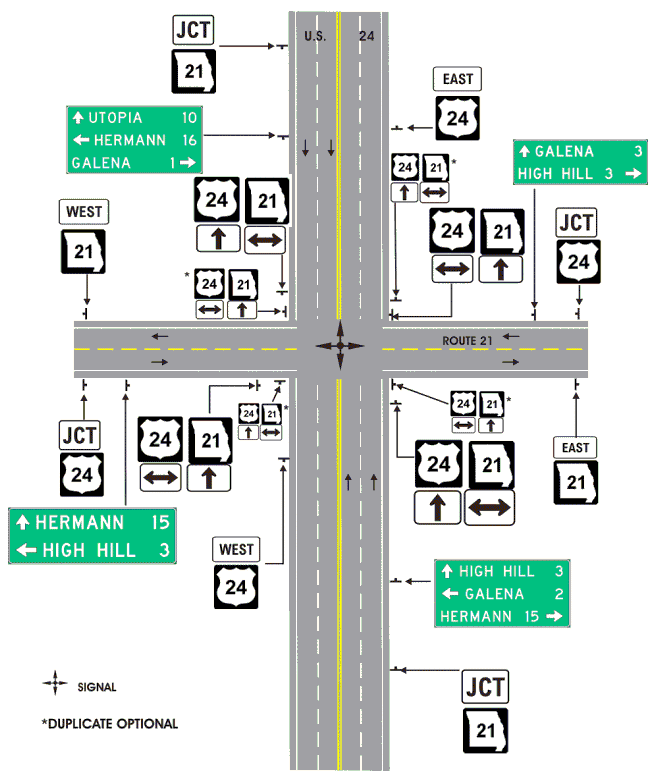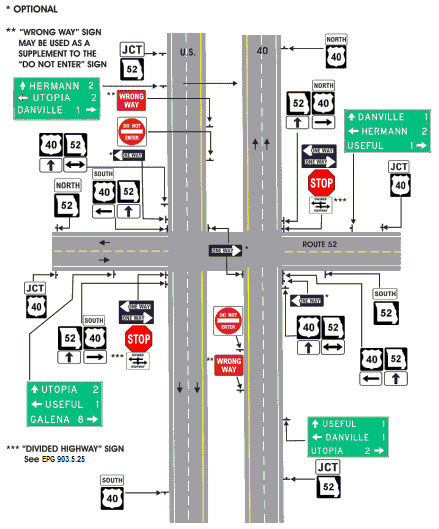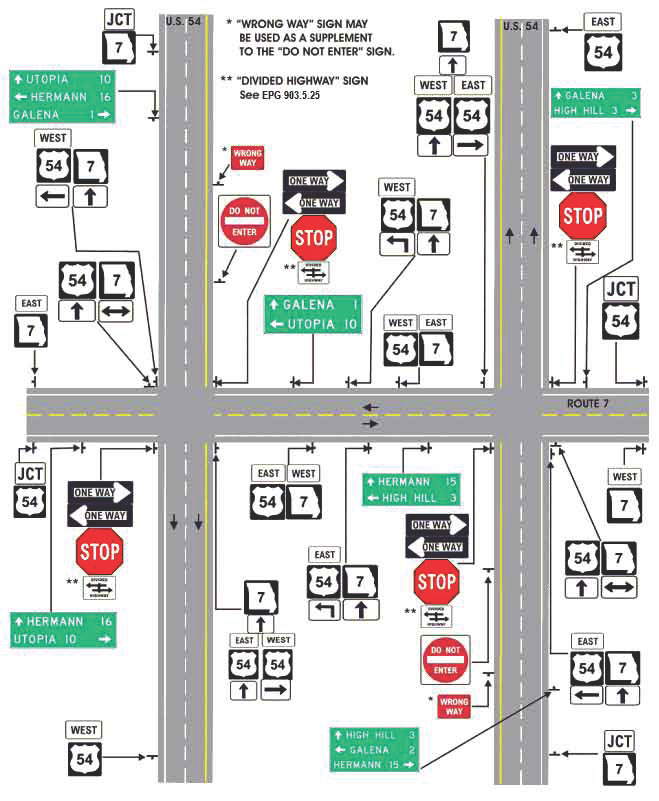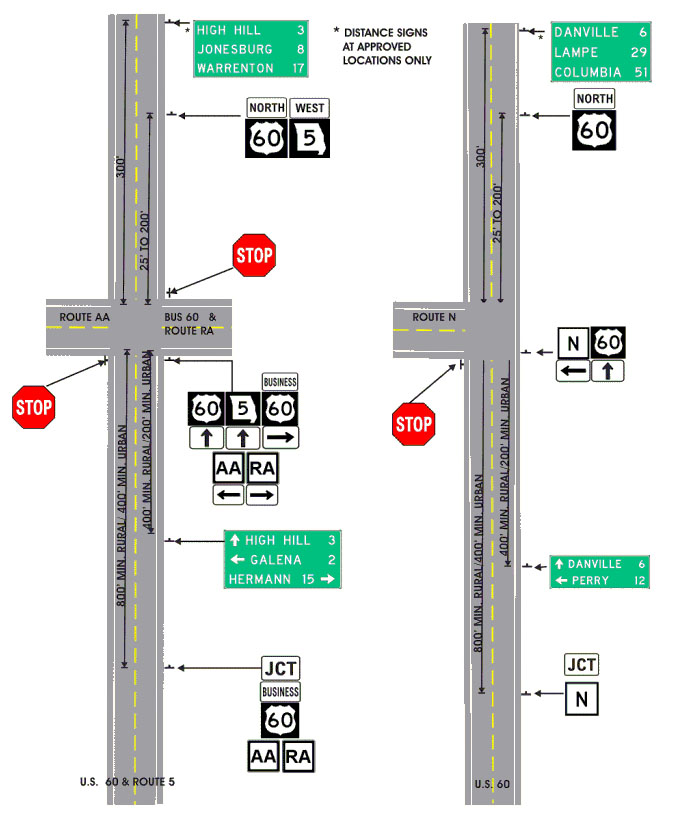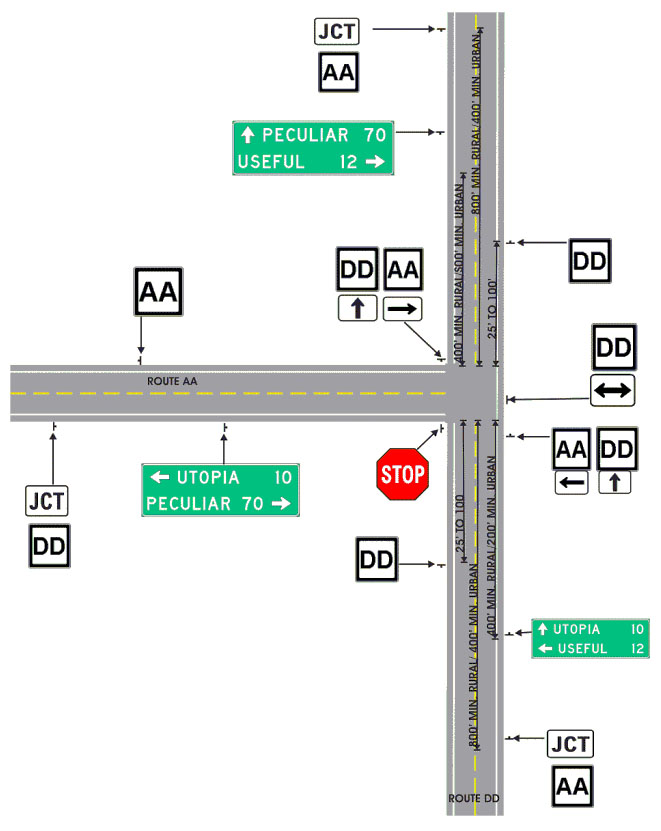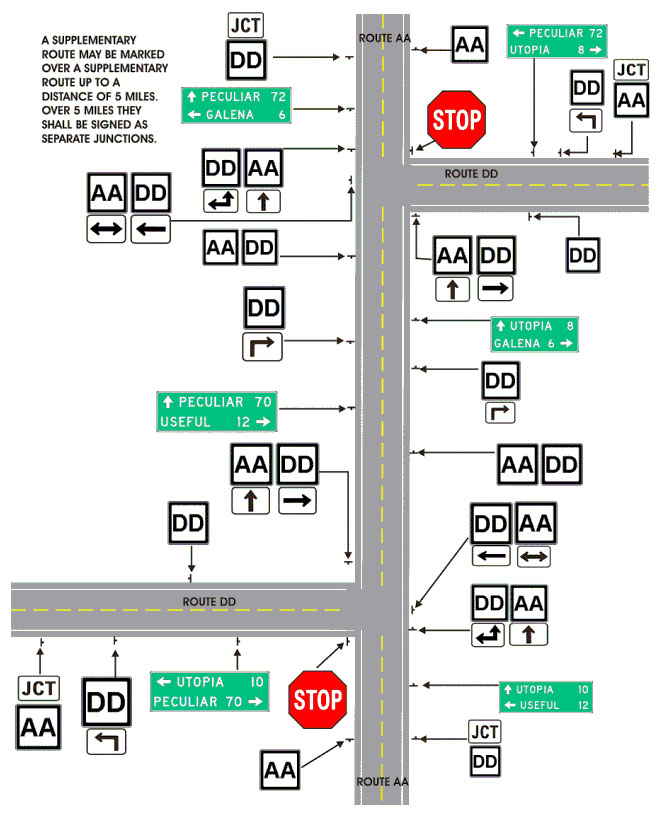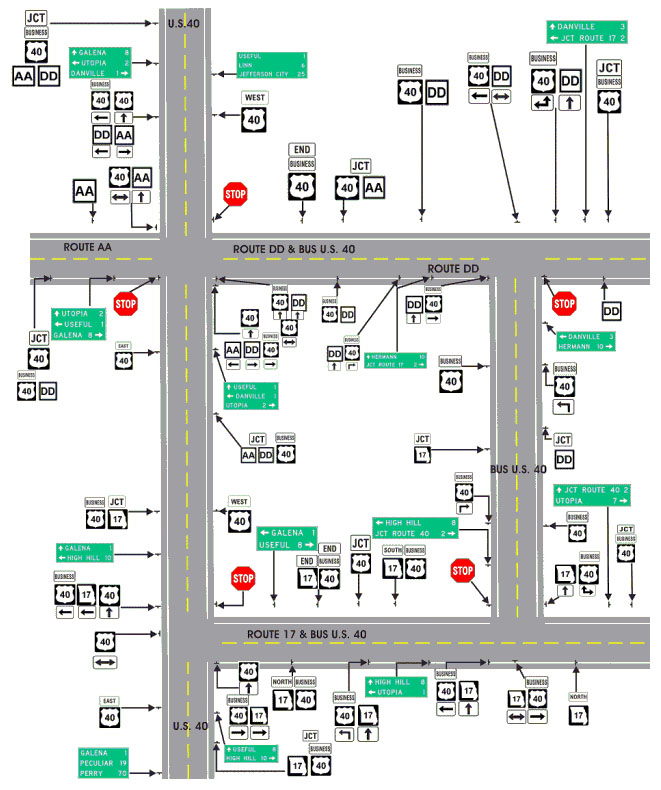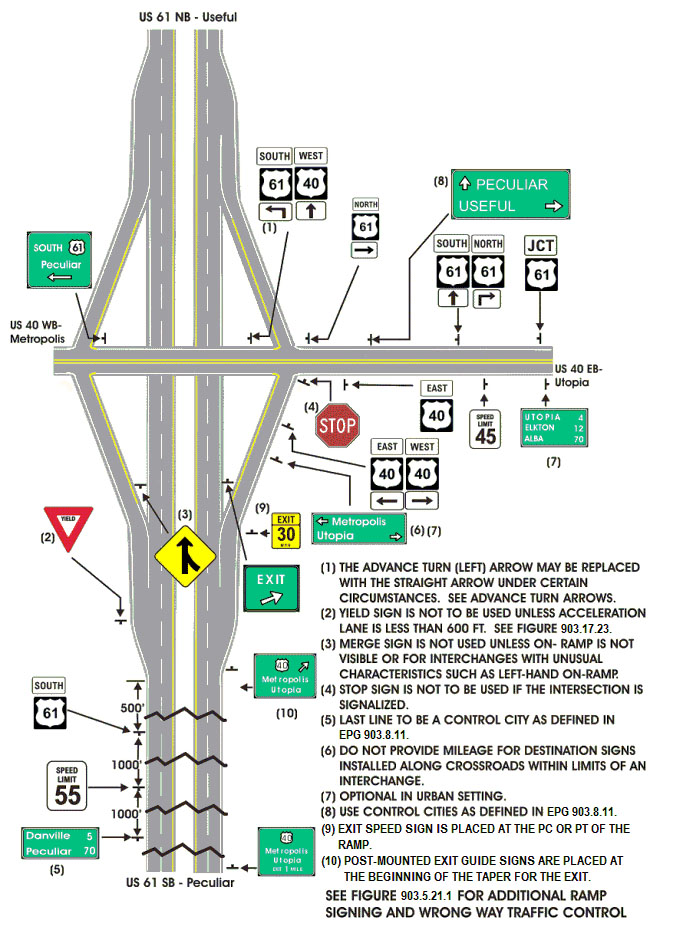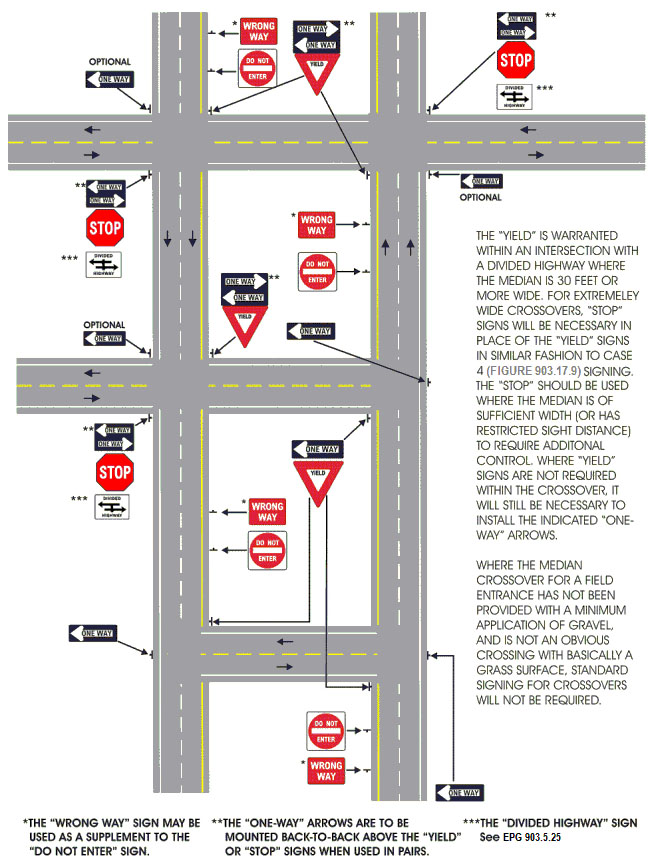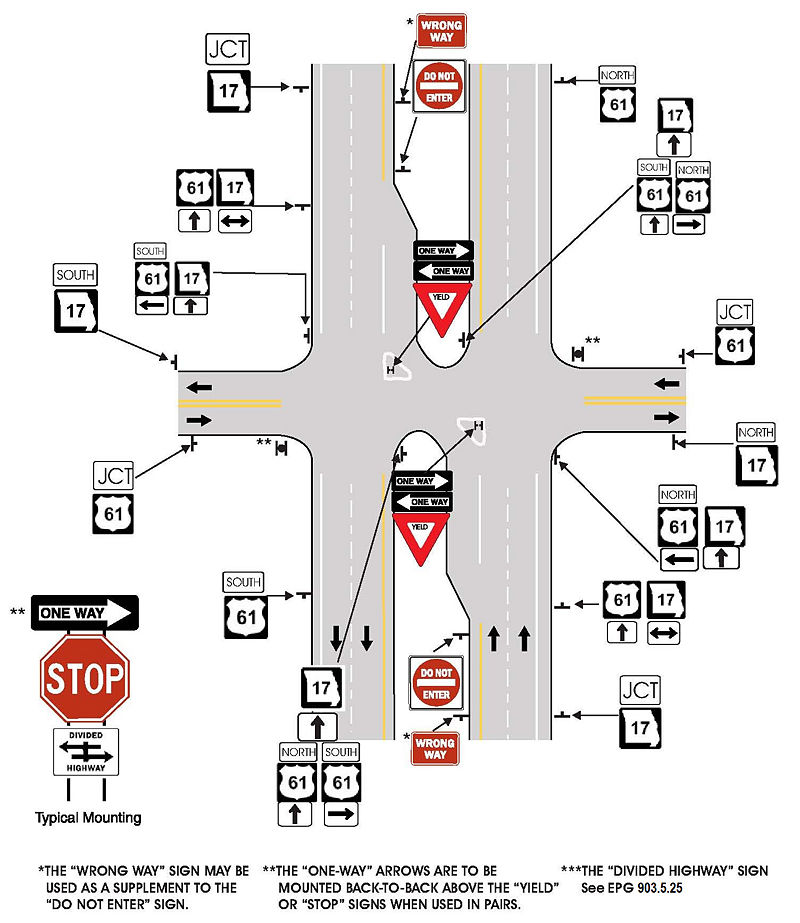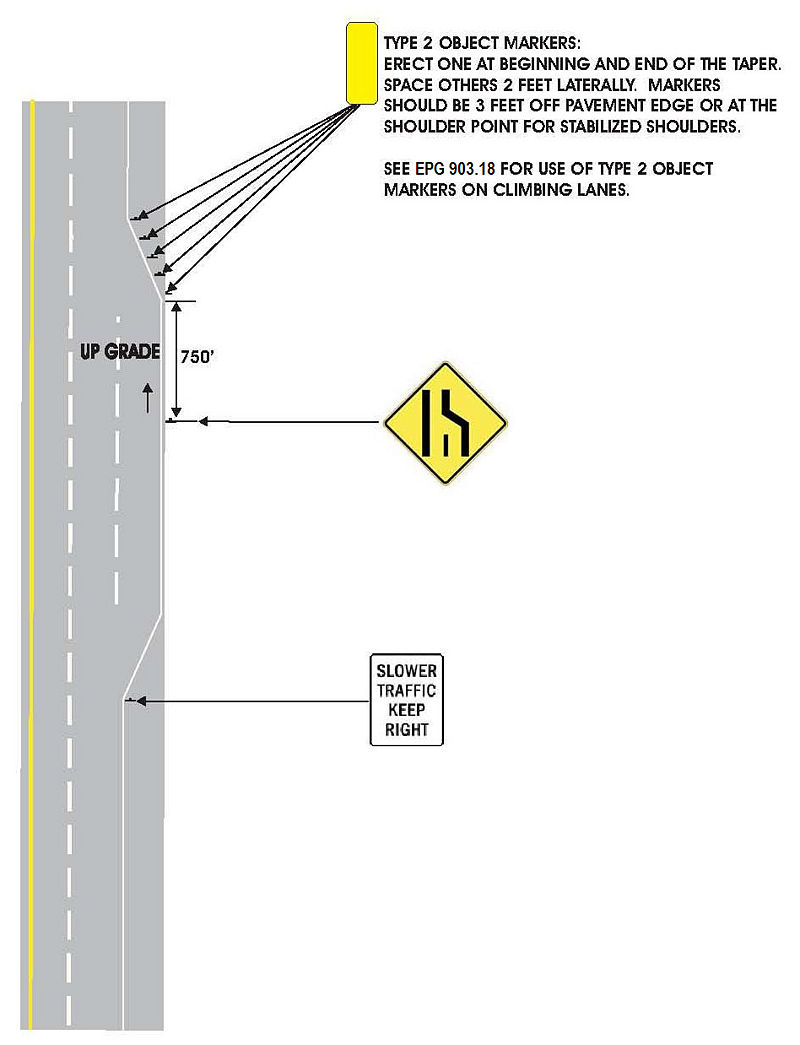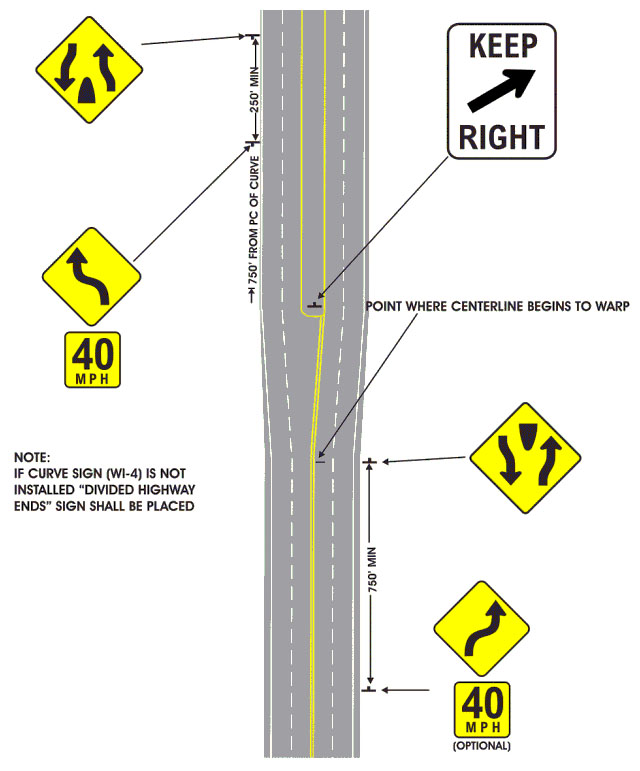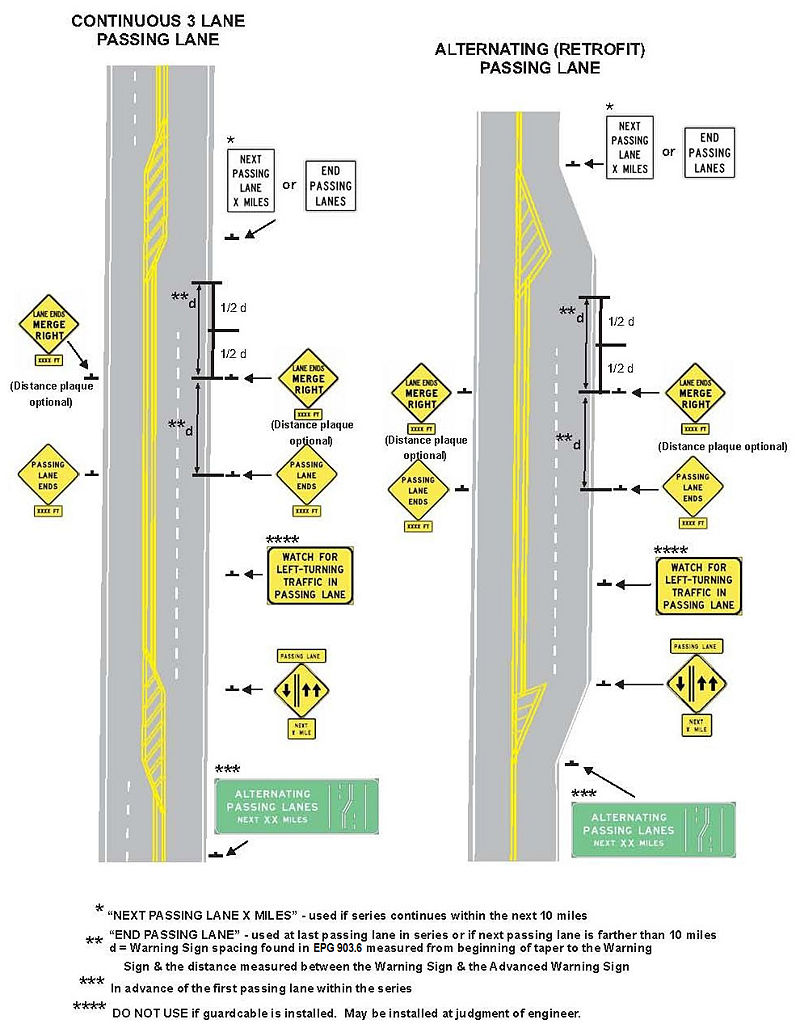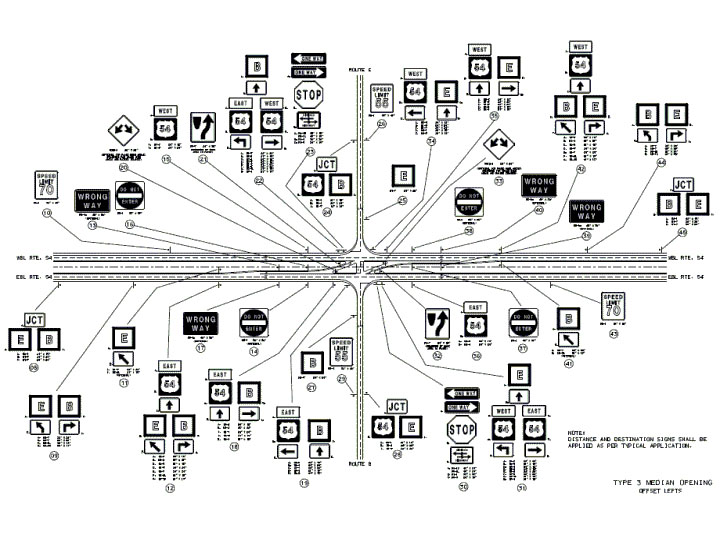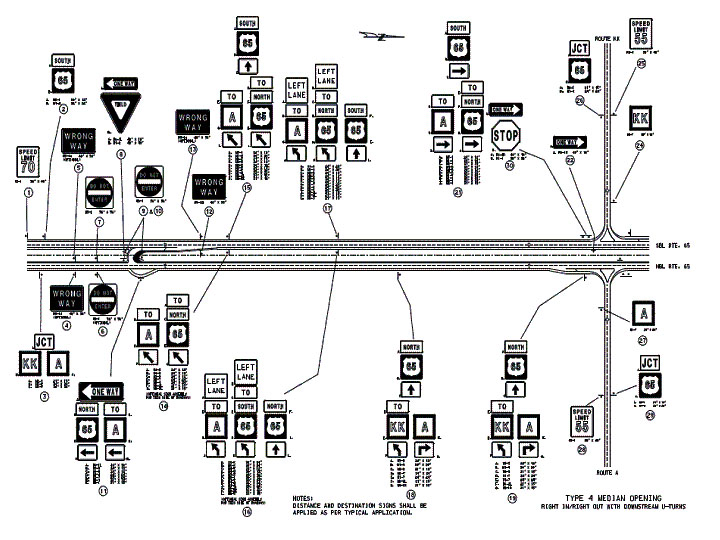Difference between revisions of "903.16 Typical Signing Applications"
Jump to navigation
Jump to search
m (Per Traffic, updated Figs. 903.17.21 & 903.17.22. Upstream "Keep Right" replaced w/ optional "Do Not Pass". MUTCD requires no "Keep Right" sign be placed where driver passes to the left of the sign.) |
m (→Figure 903.17.23 Location of Yield and Lane Ends Sign for Acceleration Ramps: Per Traffic, fig corrected to be in compliance with written guidance) |
||
| Line 170: | Line 170: | ||
==Figure 903.17.23 Location of Yield and Lane Ends Sign for Acceleration Ramps== | ==Figure 903.17.23 Location of Yield and Lane Ends Sign for Acceleration Ramps== | ||
| − | [[image:903.17.23.jpg|thumb|800px|center|<center>'''Fig. 903.17.23, Location of Yield and Lane Ends Sign for Acceleration Ramps'''</center>]] | + | [[image:903.17.23 2017.jpg|thumb|800px|center|<center>'''Fig. 903.17.23, Location of Yield and Lane Ends Sign for Acceleration Ramps'''</center>]] |
| − | |||
==Figure 903.17.24 Typical Signing for Passing Lanes== | ==Figure 903.17.24 Typical Signing for Passing Lanes== | ||
Revision as of 09:11, 28 July 2017
Support. The following figures show typical applications for signing and how to place regulatory, warning and guide signs for common situations.
Contents
- 1 Figure 903.17.1 Standard Application of City Approach Signs
- 2 Figure 903.17.2 Standard Application of Intersection Signing
- 3 Figure 903.17.3 Standard Application of Intersection Signing
- 4 Figure 903.17.4 Standard Application of Intersection Signing
- 5 Figure 903.17.5 Standard Application of Intersection Signing
- 6 Figure 903.17.6 Standard Application of Intersection Signing - Case 1: Multi-Lane Undivided
- 7 Figure 903.17.7 Standard Application of Intersection Signing - Case 2: Divided Highway Median Narrower Than 30 Feet
- 8 Figure 903.17.8 Standard Application of Intersection Signing - Case 3: Divided Highway Median 30 Ft. or Wider But Not Requiring Double Guide Signing
- 9 Figure 903.17.9 Standard Application of Intersection Signing - Case 4: Divided Highway Median Sufficient Width (Or Sight Distance Restriction) To Require Double Guide Signing
- 10 Figure 903.17.10 Standard Application of Intersection Signing
- 11 Figure 903.17.11 Standard Application of Intersection Signing
- 12 Figure 903.17.12 Standard Application of Intersection Signing
- 13 Figure 903.17.13 Standard Application of Intersection Signing
- 14 Figure 903.17.14 Standard Application of Intersection Signing
- 15 Figure 903.17.15 Standard Diamond Interchange Signing
- 16 Figure 903.17.16 Standard Regulatory Signing For Crossovers
- 17 Figure 903.17.17 Signing For Type II Crossovers
- 18 Figure 903.17.18 Standard Signing For Climbing Lane Two-Lane; Two-Way Roadway
- 19 Figure 903.17.19 Standard Signing For Climbing Lane; Four-Lane Roadway
- 20 Figure 903.17.20 Standard Signing For Pavement Transition
- 21 Figure 903.17.21 Standard Signing For Pavement Transition
- 22 Figure 903.17.22 Standard Signing For Pavement Transition
- 23 Figure 903.17.23 Location of Yield and Lane Ends Sign for Acceleration Ramps
- 24 Figure 903.17.24 Typical Signing for Passing Lanes
- 25 Figure 903.17.25 Typical Signing for Type 3 Median Openings
- 26 Figure 903.17.26 Typical Signing for Type 4 Median Openings
- 27 Figure 903.17.27 Signing for Type 4 Right-In, Right-Out Openings
Figure 903.17.1 Standard Application of City Approach Signs
Figure 903.17.2 Standard Application of Intersection Signing
Figure 903.17.3 Standard Application of Intersection Signing
Figure 903.17.4 Standard Application of Intersection Signing
Figure 903.17.5 Standard Application of Intersection Signing
Figure 903.17.6 Standard Application of Intersection Signing - Case 1: Multi-Lane Undivided
Figure 903.17.7 Standard Application of Intersection Signing - Case 2: Divided Highway Median Narrower Than 30 Feet
Figure 903.17.8 Standard Application of Intersection Signing - Case 3: Divided Highway Median 30 Ft. or Wider But Not Requiring Double Guide Signing
Figure 903.17.9 Standard Application of Intersection Signing - Case 4: Divided Highway Median Sufficient Width (Or Sight Distance Restriction) To Require Double Guide Signing
Figure 903.17.10 Standard Application of Intersection Signing
Figure 903.17.11 Standard Application of Intersection Signing
Figure 903.17.12 Standard Application of Intersection Signing
Figure 903.17.13 Standard Application of Intersection Signing
Figure 903.17.14 Standard Application of Intersection Signing
Figure 903.17.15 Standard Diamond Interchange Signing
Figure 903.17.16 Standard Regulatory Signing For Crossovers
Figure 903.17.17 Signing For Type II Crossovers
Figure 903.17.18 Standard Signing For Climbing Lane Two-Lane; Two-Way Roadway
Figure 903.17.19 Standard Signing For Climbing Lane; Four-Lane Roadway
Figure 903.17.20 Standard Signing For Pavement Transition
Figure 903.17.21 Standard Signing For Pavement Transition
Figure 903.17.22 Standard Signing For Pavement Transition
Figure 903.17.23 Location of Yield and Lane Ends Sign for Acceleration Ramps
Figure 903.17.24 Typical Signing for Passing Lanes
Figure 903.17.25 Typical Signing for Type 3 Median Openings
